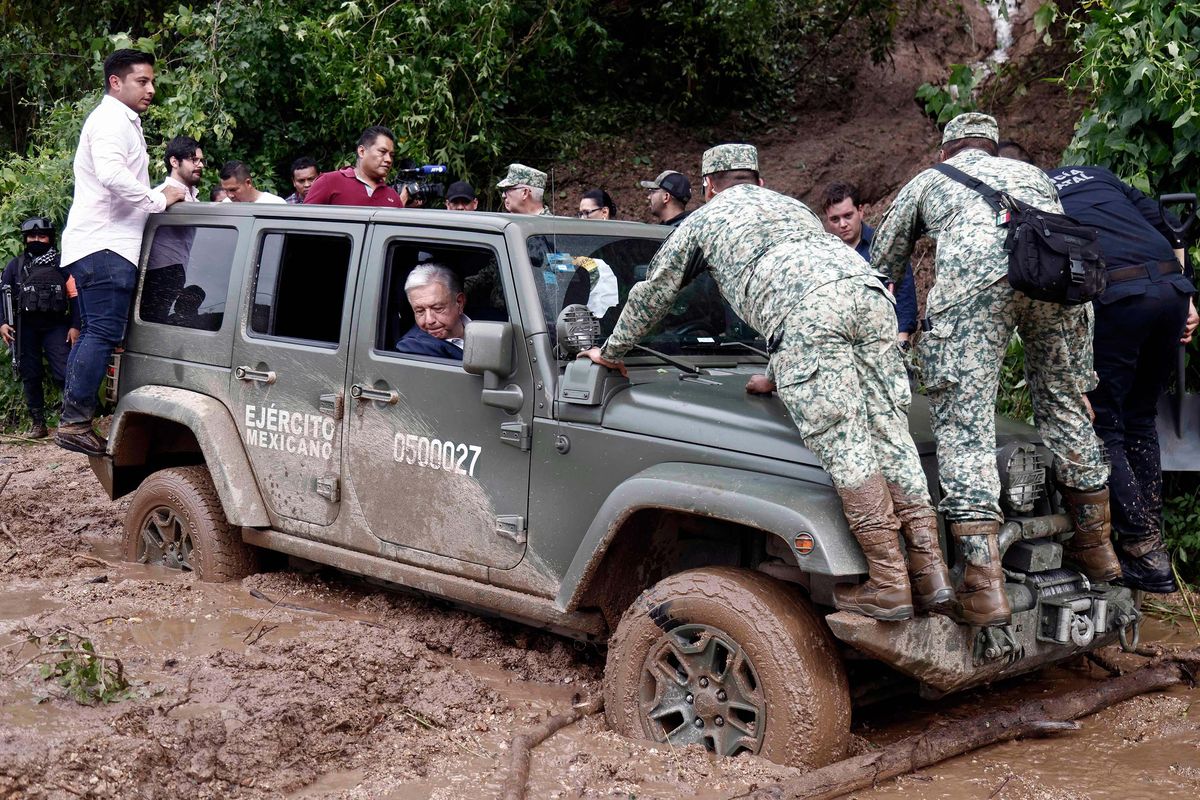In Acapulco, survivors of Mexico’s most powerful hurricane on record are growing desperate

ACAPULCO, Mexico – Two days after an extraordinarily powerful hurricane lashed Acapulco, causing widespread damage and at least 27 deaths, residents and tourists here were growing increasingly desperate.
On the highway approaching the beleaguered city Friday, dozens of residents stood along the road with signs begging for aid.
“We’re hungry,” said one sign. “We need food,” said another. “Please help us,” said a third.
“No one has come. The government has done nothing,” said Hisaele Saucedo Bernal, a 58-year-old who said her home had flooded up to her waist when the Category 5 Hurricane Otis slammed the coastline early Wednesday morning. “No one has been here.”
A quarter-million homes remained without electricity and food, gasoline and clean water were in short supply. With little aid distribution and few if any shopping establishments open for business, many in this city of nearly 1 million had resorted to taking goods from shattered storefronts.
On streets blocked by downed power poles, mangled palms and other debris, others were jammed into storm-damaged vehicles in an attempt to flee.
In downtown Acapulco, stranded tourists wandered the streets in a daze. Amalia Garrido, 63, was one of dozens of visitors camped out late Thursday near a shuttered gas station along Acapulco’s iconic coastal boulevard, Avenida Costera Miguel Alemán.
Once lined with sleek hotels, nightclubs and seaside restaurants selling fish, the road was nearly unrecognizable: strewn with glass, twisted metal and other debris.
Hotels and high-rise condos were disfigured, their balconies sheared away as though a malevolent giant had clawed through the city.
“It makes you want to cry because everything is so ugly, so destroyed,” said Garrido, who had arrived in Acapulco on Monday with seven family members to celebrate her grandson’s birthday.
Their hotel was severely damaged, and they and other guests had been forced out on the streets. She and her relatives had no idea how to exit the city, and no clue where to sleep.
“The truth is that I am afraid,” Garrido said. “There is no water here, there is no food.
“People are stealing everywhere,” she added, saying she felt a mix of “danger, sadness, worry and fear.”
Government officials said more than 13,000 federal troops had been deployed to the city, and that 7,500 portions of food supplies had been distributed in different neighborhoods affected by the hurricane, along with 7,000 liters of water.
On Friday, officials said 40 tons of supplies were due to arrive at an airport just north of the city.
Many on the ground said the government appeared all but absent in the first 48 hours.
“The president says there are people helping us here, but there’s nobody,” said one sobbing woman in a video widely circulated on social media. “And there are many dead, many more than they say.”
While the official death toll stands at 27, there was growing evidence that there may be additional casualties not accounted for. At the city’s once-elegant yacht club, hulking boats had been lifted from the ocean and tossed ashore, and six bodies wrapped in fabric had been lined up on a patch of grass. Local newspapers reported bodies in other parts of town that likely also had not been counted.
Speaking at his daily news conference Friday, President Andrés Manuel López Obrador did not address those concerns, and said he believed Mexico had been “lucky” to have survived the hurricane with so few deaths. “Everything indicates that … there were not so many,” he said of storm-related deaths. “Fortunately we are not registering many losses of human life.”
He downplayed disorder and fear in the streets, saying the government is attending to residents and will continue to do so.
“We will not leave Acapulco until it’s reestablished and has returned to normal,” said López Obrador, who said he thought the city could be rebuilt in “little time.” He said government officials were meeting Friday with representatives of the hotel industry, who have said that 80% of hotels in the city were damaged by the storm.
While some have criticized the government for not doing more to protect residents from the hurricane, the president reiterated that the storm’s ferocity took everyone – even weather experts – by surprise.
“Ask the hurricane centers if this wasn’t an extraordinary phenomenon,” he said.
Indeed, just 24 hours before the deluge, meteorologists were predicting Otis would make landfall as a relatively light Category 1 hurricane. But after hitting a patch of warm ocean water it grew rapidly into what the National Hurricane Center warned would be a “potentially catastrophic Category 5 hurricane.”
Scientists say it was one of the fastest-growing hurricanes ever observed. And, they say, as oceans warm due to human-driven climate change, similarly supercharged hurricanes are likely to be more frequent.
_____
(Los Angeles Times staff writer Kate Linthicum reported from Mexico City and staff writer Patrick J. McDonnell reported from Acapulco. Special correspondent Cecilia Sanchez Vidal in Acapulco also contributed to this report.)